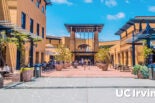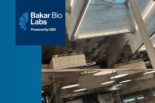Innovations in Networking Awards are presented each year by CENIC to highlight exemplary innovations that leverage ultra-high bandwidth networking. The winning innovations have the potential to transform the ways in which instruction and research are conducted as well as further the deployment of broadband in underserved areas. UC innovations took home four awards this year at CENIC’s annual conference:
Cloud Applications: UC Medicine Data Center Initiative (UC Health)
Demand for IT services in public and private clouds, along with the need for heightened security, has been rapidly increasing. UC’s response – consolidating data center facilities, converging systems, and providing a north-south common data strategy by creating two new data facilities – is an effective answer to these urgent needs. UC’s two data centers, located in Quincy, Washington, and Irvine, California, have helped the institution avoid substantial capital investments in existing outdated data centers, lowered operating costs, and significantly improved the physical security of critical resources and data. To cap it off, both centers are far more energy efficient; the Quincy center is run completely by hydropower.
UC Health is now in the position to leverage computing and storage needs across all five of their health system campuses and spur other collaborative activity. For example, the implementation of a common clinical decision support system across UC Health, which both enables greater patient safety and avoids unnecessary costs.
Broadband Applications: UC Agriculture and Natural Resources Extends Broadband to Rural Researchers
In 2016, CENIC began working with the University of California Division of Agriculture and Natural Resources (UC ANR) to connect its nine Research and Extension Centers to the California Research and Education Network (CalREN). Previously, UC ANR had been severely hampered by poor Internet connectivity, making it hard for academic researchers and cooperative extension agents to engage with community and industry partners. Thanks to the new connections, six of the nine centers are now equipped with Internet speeds comparable to those found on UC campuses. Researchers now have the bandwidth needed to use a full range of scientific instruments, while farmers who were previously unable to visit one of the centers can connect virtually and tune in to real-time video streams, gaining access to the latest information. Being connected to CalREN better equips UC ANR researchers and educators to bring practical, science-based answers to Californians residents and businesses.
Research Applications: UCSC’s Hyades Supercomputer Cluster Connected to LBNL’s NERSC
To improve network capabilities for its astronomy and astrophysics departments, the University of California, Santa Cruz, recently connected its Hyades Supercomputer Cluster to Lawrence Berkeley National Laboratory’s (LBNL) National Energy Research Scientific Computing Center (NERSC) at 100 Gbps. This connection, over CENIC’s 100 Gbps optical infrastructure, enables UCSC to carry out the high-speed transfer of large data sets produced at NERSC. Because astronomy and astrophysics require the processing of massive amounts of data, researchers depend heavily on high-speed access to large datasets and computing resources. New speeds are now five times faster than previous speeds and have the potential to increase by 20 times in 2018. This effort dovetails with the development of the Pacific Research Platform (PRP), which integrates Science DMZs on multiple campuses into a high-capacity regional “freeway system.” The combined impact on research and data transfer is monumental.
Experimental Applications: WIFIRE, HPWREN, & AlertTahoe (UCSD)
In recent times, wildfires have become a huge threat to California communities, infrastructure, and ecosystems. Three projects – WIFIRE, HPWREN, and AlertTahoe – have made groundbreaking strides in wildfire data collection and prevention. WIFIRE is an NSF-funded project at UC San Diego that has developed real-time, data-driven wildfire prediction, visualization, and simulation software. It works in conjunction with HPWREN – the High-Performance Wireless Research and Education Network – a high-speed, wireless network that covers a large portion of Southern California and collects ecological and meteorological data from a multitude of cameras and sensors. AlertTahoe operates on a similar model, using a fire-camera and multi-hazard tracking system to collect wildfire data and give first responders early warnings and monitoring capabilities. Each of these projects has provided a crucial new resource to first responders, wildfire researchers, and California residents.







